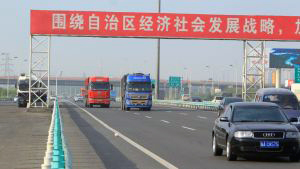
Economic growth in both developing and advanced economies has slowed since the global financial crisis. Developing Asia’s growth also moderated after the crisis, to a large extent driven by the slowdown in the People’s Republic of China (PRC). The region’s economy expanded on average 7.6% annually during 2001–2010, but growth slowed to an annual average of 6.5% during 2011–2015. ADB is projecting further deceleration to 5.7% in each 2016 and 2017.
Crisis-related cyclical factors can partly explain developing Asia’s slowdown. The weak global recovery has curtailed exports of developing economies that are open and highly reliant on external demand, including those closely integrated in global value chains. The flagging global recovery, coupled with the PRC’s growth moderation, has contributed to softening global commodity prices and constrained the growth of commodity-exporting countries. Effective demand management, including both monetary and fiscal measures, is important to respond to cyclical slowdowns.
But a major concern is the slowdown in potential growth. A recent ADB study shows that potential growth in developing Asia moderated from 8.4% in 2007 to 6.7% in 2014—with many economies experiencing either falling labor force growth due to demographic changes, or declining labor productivity growth that is partly associated with the process of convergence—that is, a country’s growth rate tends to come down as it becomes more developed, or both.
The key to boosting the region’s potential growth is to continue structural reforms. These are policy actions that eliminate impediments to efficient resource allocation, reduce technical and managerial inefficiency, enhance an economy’s ability to respond to shocks, and lay the foundations for greater private investment and innovation. Structural reforms that addressed specific domestic or behind-the-border constraints have been key drivers of rapid economic growth in developing Asia in recent decades.
Encouragingly, most Asian governments have shown that they are committed to continuing structural reforms. Many are scaling up reform efforts in trade and investment regimes, macroeconomic management and public finance, financial regulation, and public sector governance.
For example, the PRC is tackling excess capacity in selected sectors, scaling up innovation and industrial upgrading, and exploring new sources of growth through greater reliance on domestic consumption and services sector. To achieve all this, the government is deepening supply-side structural reforms, especially in state-owned enterprises, the finance sector, the fiscal system, and public sector governance.
India as well is initiating major structural reforms and promoting a move towards manufacturing through the ‘Make in India’ campaign, building on strong growth led by the services sector particularly information technology services. Other South Asian countries are also implementing measures to address infrastructure gaps, improve the business environment, strengthen financial regulation, and improve the quality of education.
Southeast Asian economies are taking steps to enhance economic resilience by addressing supply- and demand-side constraints, and by strengthening regional cooperation. The start of the Association of Southeast Asian Nations Economic Community in early 2016 has spurred governments to further reduce trade barriers, improve connectivity and competitiveness, enhance the business climate, and attract more investment to the region.
Meanwhile, many economies in Central Asia and the Pacific are moving to diversify away from natural resource sectors into other economic activities to reduce vulnerability to external shocks, such as falling global commodity prices. Supporting small and medium-sized enterprise development and training will aid this diversification.
The key to sustaining these structural reforms is through a commitment to inclusive growth. Importantly, many countries are coupling their structural reform efforts with an increased emphasis on job creation, reducing regional disparities, strengthening social protection, and promoting equal access to opportunity. Environmental protection is also being promoted by strengthening legal and regulatory frameworks, building institutional capacities, and promoting finance for ‘green’ technologies.
Ambitious structural reforms that are sweeping across the region hold promise for boosting Asia’s potential growth. ADB’s study shows that policies that close half of the gaps with global best practices in tertiary education, labor market flexibility, institutional quality, trade openness, and financial integration could raise developing Asia’s potential growth by nearly 1 percentage point annually over the next ten years.
With structural reforms and their effective implementation, the region’s economy is likely to continue to lead world growth.
This article was first published by the ADB Development Blog.








Comments are closed.